OntoUML (Guizzardi, 2005) was conceived as an ontologically well-founded version of the UML 2.0 fragment of class diagrams. The idea was to employ the an ontology-based language engineering method to design a language for structural conceptual modeling (i.e., for modeling aspects related to objects, reified properties and reified relations) that would have two main characteristics. Firstly, the worldview embedded in the language through its conceptual primitives should be isomorphic to the ontological distinctions put forth by a suitable fragment of UFO. Secondly, the language metamodel should incorporate formal syntactical constraints that would delimit the set of grammatically valid models of the language to those that represented intended state of affairs admitted by the underlying ontology. By doing this, we have managed to build a modeling language with explicitly defined formal and real-world semantics. This language serves as an engineering tool for enabling the use of formal ontological theories in the construction of conceptual models and domain ontologies.
Over the years, OntoUML has been adopted by many research, industrial and government institutions worldwide. In addition, some of the foundational theories underlying OntoUML have also been adopted by other conceptual modeling languages, e.g., ORM 2.0. It has been employed in a number of projects in different countries, in academic, government and industrial institutions, in domains such as Geology, Biodiversity Management, Organ Donation, Petroleum Reservoir Modeling, Disaster Management, Context Modeling, Datawarehousing, University Campus Management, Enterprise Architecture, Metamodeling, Data Provenance, Measurement, Logistics, Integration of Analytical Tools, Complex Media Management, Telecommunications, Petroleum and Gas, heart electrophysiology, among many others.
Ontology-Driven Conceptual Modeling with OntoUML is supported by a set of computational tools aggregated into the OLED Editor.
Some Key References
- G. GUIZZARDI, Ontological Foundations for Structural Conceptual Models, {Universal Press}, 2005.
- G. GUIZZARDI, G. WAGNER, J. P. A. ALMEIDA, and R. S. S. GUIZZARDI, “Towards ontological foundations for conceptual modeling: The unified foundational ontology (UFO) story,” Applied Ontology (Online), vol. 10, p. 259–271, 2015.
- G. GUIZZARDI, “Ontological Patterns, Anti-Patterns and Pattern Languages for Next-Generation Conceptual Modeling,” in Proceedings of the 33rd International Conference on Conceptual Modeling (ER 2014), 2014.
- J. P. A. ALMEIDA, R. A. FALBO, and G. GUIZZARDI, “Events as Entities in Ontology-Driven Conceptual Modeling,” in Proc. of the 38th International Conference on Conceptual Modeling (ER 2019), 2019.
- C. M. FONSECA, D. PORELLO, G. GUIZZARDI, J. P. ALMEIDA, and N. GUARINO, “Relations in Ontology-Driven Conceptual Modeling,” in Proc. of the 38th International Conference on Conceptual Modeling (ER 2019), 2019.
- M. VERDONCK, F. GAILLY, R. PERGL, G. GUIZZARDI, B. MARTINS, and O. PASTOR, “Comparing traditional conceptual modeling with ontology-driven conceptual modeling: An empirical study,” INFORMATION SYSTEMS, vol. 81, p. 92–103, 2019.
- G. GUIZZARDI, C. M. FONSECA, A. B. BENEVIDES, J. P. ALMEIDA, D. PORELLO, and T. P. SALES, “Endurant Types in Ontology-Driven Conceptual Modeling: Towards OntoUML 2.0,” in Lecture Notes in Computer Science, 2018.
- F. B. RUY, G. GUIZZARDI, R. A. FALBO, C. C. REGINATO, and V. A. SANTOS, “From reference ontologies to ontology patterns and back,” DATA & KNOWLEDGE ENGINEERING, vol. 109, 2017.






